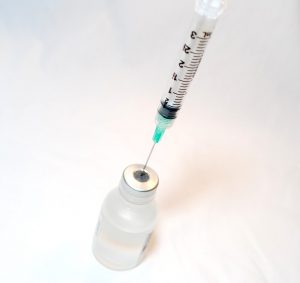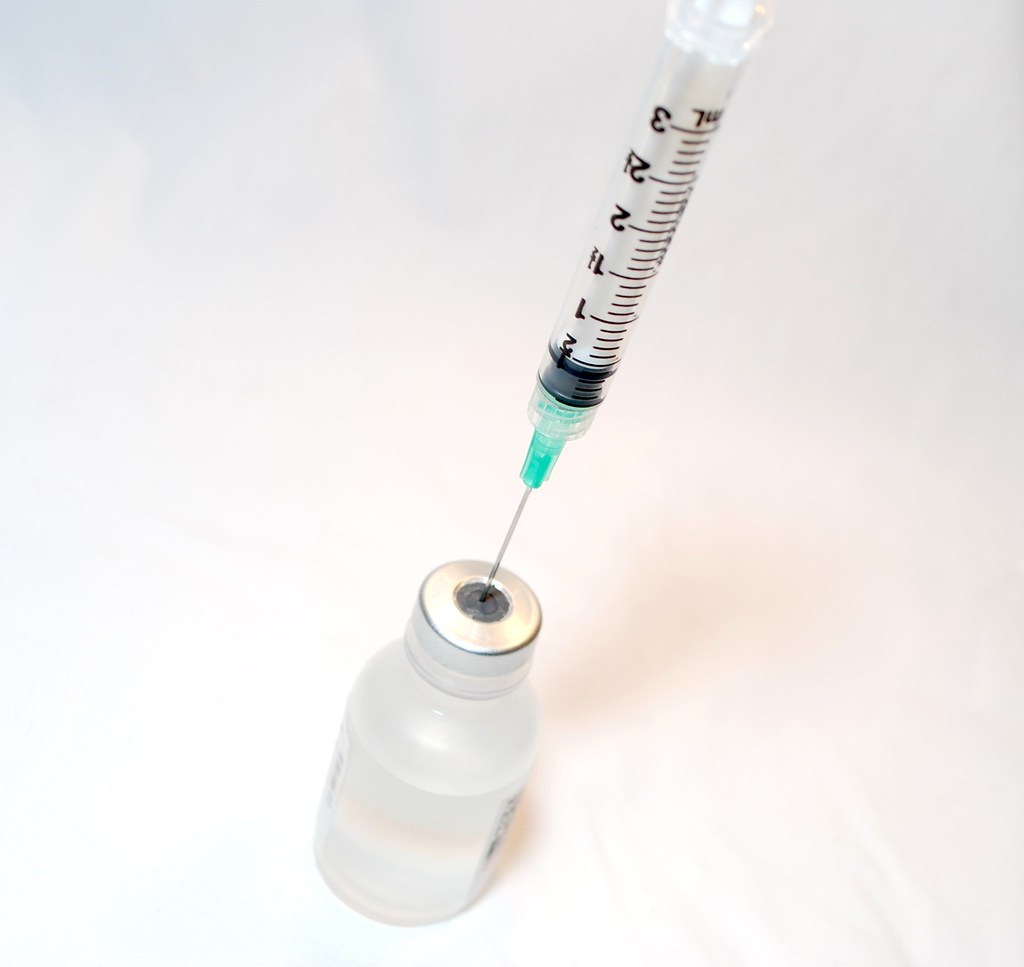By Chloe Hillard
Coronavirus has ravaged our country. More than eight million Americans have been infected and over 217,000 Americans have died due to coronavirus.[1] Although some call the pandemic “the great equalizer”[2], statistics show that’s a myth. The coronavirus is killing Black and Latinx Americans at staggeringly high rates compared to white Americans. There’s nothing equal about the destruction caused of coronavirus. Unfortunately, nothing seems equal about the solution either. Early studies show that although Black and Latinx Americans are disproportionately impacted by the coronavirus, they are severely underrepresented in vaccine clinical trials.[3]
Racial disparities in coronavirus infection and mortality are largely due to structural racism.[4] Black Americans have higher rates of chronic conditions, often lack access to quality health care, and disproportionately hold essential frontline jobs that increase virus exposure.[5] Similarly, Latinx Americans disproportionately hold jobs that increase virus exposure, and often live in multi-generational households where virus transmission is easier.[6]
The result of such structural racism is staggering. Earlier this year, The New York Times filed a Freedom of Information Act lawsuit against the Centers for Disease Control and Prevention (CDC) to force the CDC to release racial and ethnic data on the coronavirus.[7] The Times investigation found that Black and Latinx Americans are three times more likely to become infected than their white counterparts.[8] Black and Latinx Americans are also twice as likely to die from coronavirus.[9]
Despite being disproportionately harmed by coronavirus, Black and Latinx Americans are severely underrepresented in vaccine clinical trials.[10] For example, only 20% of patients in the placebo-controlled Adaptive Covid-19 Treatment Trial (ACTT-1) were Black and only 11% of the patients randomly assigned to 5 or 10 days of remdesivir in the Gilead-funded study were Black.[11] The percent of Latinx patients in the Gilead study were not reported, but only 23% of patients in the ACTT-1 study were Latinx.[12]
Minority representation in clinical trials is important because drug efficacy is known to vary by race.[13] Furthermore, it is important to include high-risk patients in clinical trials, because high-risk patients are more likely to be treated by the medical product.[14]
Unfortunately, underrepresentation of minorities in clinical trials is not a new problem. For example, even though Black Americans are disproportionately affected by heart conditions, the Food and Drug Administration (FDA) found that only 2.5% of cardiovascular clinical trial participants were Black.[15] In addition, in 2019 drug trials, only 9% of trial participants were Black and 18% were Latinx.[16] These inequities persist despite National Institute of Health (NIH) and FDA policies demanding minority inclusion in clinical trials. The NIH mandates inclusion of minorities in NIH-funded research.[17] NIH-defined phase 3 clinical trials are also required to report outcomes stratified according to sex or gender and according to race and ethnicity, unless data suggests that differences are unlikely to be observed.[18] Furthermore, FDA regulations require product developers who submit applications for medical products to analyze clinical trial data by sex, age, and race.[19]
Clinical trials for the coronavirus vaccine illustrate that NIH and FDA regulations have not achieved their intended outcome. However, regulatory regimes cannot be a cure-all for lack of diversity in clinical trials. Just as racial disparities in infection and mortality rates have roots in structural racism, so do disparities in clinical trials. For example, minority scientists are often underrepresented when it comes to funding.[20] In addition, there’s a history of mistrust of clinical trials, born from abusive research practices such as the Tuskegee syphilis study.[21] Such distrust makes it difficult to enroll minority participants in trials.[22] These impediments must be addressed in any solution for lack of diversity in coronavirus vaccine clinical trials. The pandemic certainly has not been “the great equalizer”. If we don’t address structural racism in clinical trials, a vaccine might not be “the great equalizer” either.
[1] See Covid in the U.S.: Latest Map and Case Count, N.Y. Times (Oct. 16, 2020, 12:06 PM), https://www.nytimes.com/interactive/2020/us/coronavirus-us-cases.html.
[2] See Bethany L. Jones & Jonathan S. Jones, Gov. Cuomo is Wrong, Covid-19 is Anything but an Equalizer, Wash. Post (Apr. 5, 2020), https://www.washingtonpost.com/outlook/2020/04/05/gov-cuomo-is-wrong-covid-19-is-anything-an-equalizer/.
[3] Daniel B. Chastain et al., Racial Disproportionality in Covid Clinical Trials, New Eng. J. Med. (Aug. 27, 2020), https://www.nejm.org/doi/full/10.1056/NEJMp2021971.
[4] See Maria Godoy, What Do Coronavirus Racial Disparities Look Like State By State?, NPR (May 30, 2020, 6:00 AM), https://www.npr.org/sections/health-shots/2020/05/30/865413079/what-do-coronavirus-racial-disparities-look-like-state-by-state.
[5] Id.
[6] Id.
[7] Richard A. Oppel Jr., et al., The Fullest Look Yet at the Racial Inequity of Coronavirus, N.Y. Times (Jul. 5, 2020), https://www.nytimes.com/interactive/2020/07/05/us/coronavirus-latinos-african-americans-cdc-data.html.
[8] Id.
[9] Id.
[10] Daniel B. Chastain et al., Racial Disproportionality in Covid Clinical Trials, New Eng. J. Med. (Aug. 27, 2020), https://www.nejm.org/doi/full/10.1056/NEJMp2021971.
[11] Id.
[12] Id.
[13] See e.g., Nicholas Weiler, Genomic Analysis Reveals Why Asthma Inhalers Fail Minority Children, UCSF (Mar. 14, 2018), https://www.ucsf.edu/news/2018/03/410041/genomic-analysis-reveals-why-asthma-inhalers-fail-minority-children
[14] See FDA Encourages More Participation, Diversity in Clinical Trials, FDA (Jan. 16, 2018), https://www.fda.gov/consumers/consumer-updates/fda-encourages-more-participation-diversity-clinical-trials.
[15] U.S. Food & Drug Admin., 2015-2016 Global Participation in Clinical Trials Report 24 (2017).
[16] U.S. Food & Drug Admin., 2019 Drug Trials Snapshots Summary Report 3 (2020).
[17] See Inclusion of Women and Minorities as Participants in Research Involving Human Subjects, NIH (Dec. 27, 2019), https://grants.nih.gov/policy/inclusion/women-and-minorities.htm.
[18] See id.
[19] FDA Encourages More Participation, Diversity in Clinical Trials, FDA (Jan. 16, 2018), https://www.fda.gov/consumers/consumer-updates/fda-encourages-more-participation-diversity-clinical-trials.
[20] See Mary Chris Jaklevic, Researchers Strive to Recruit Hard-Hit Minorities Into COVID-19 Vaccine Trials, JAMA Network (Aug. 13, 2020), https://jamanetwork.com/journals/jama/fullarticle/2769611?guestAccessKey=21455965-ff5d-4474-a38a-77f5e6f27815&utm.
[21] See id.
[22] See id.

Image Source: https://search.creativecommons.org/photos/b3922f1b-0eb9-40dd-a44d-d4408f2ace0a
